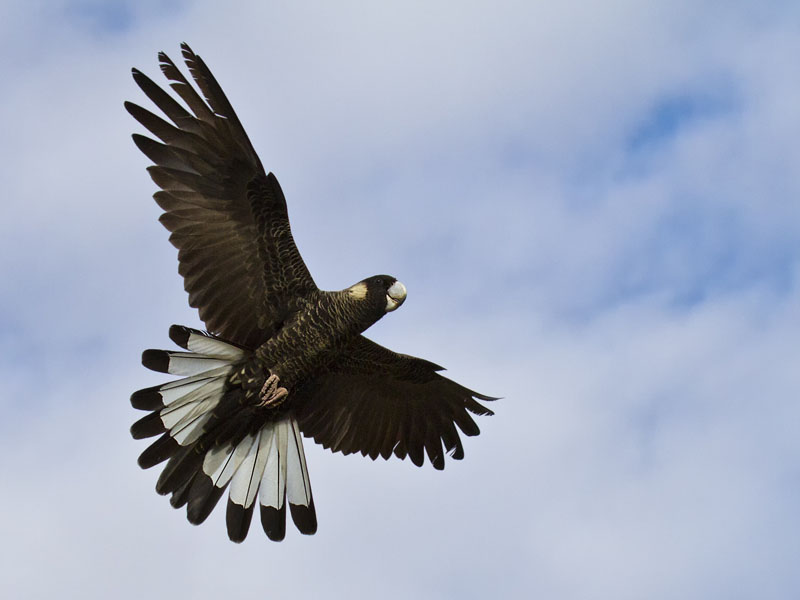Behaviour
Call
Loud, high, querulous (of a whining manner), drawn out, wheezy ‘ai-whiieer-la’ or ‘wy-ieeer-la’; the emphasis on the extended middle wail.
Longer call than the Baudin’s Black-Cockatoo. With considerable experience, the calls can be helpful in separating the two WA white-tailed black-cockatoos.
Diet
Carnaby’s Black-Cockatoos mostly forage in trees, especially proteaceous plants such as Banksias, Hakeas and Dryandras, as well as eucalypts, tearing off the seed pods from the tree, holding them with the foot and breaking them open to extract the seeds within. They sometimes also often forage in pine trees and orchards. Occasionally they forage on the ground, especially in areas with the agricultural weed Erodium.
Breeding
Breeds from July to November in monogamous pairs, and nests in hollows in old eucalypts at least 100 years old to have hollows large enough. Pairs return to the same nest site each year. They lay one or two white eggs, which are incubated by the female. Both parents feed the chicks, but only the female broods them.
Field Guide
Improve your identification skills. Download your Carnabys Black-Cockatoo field guide here!




